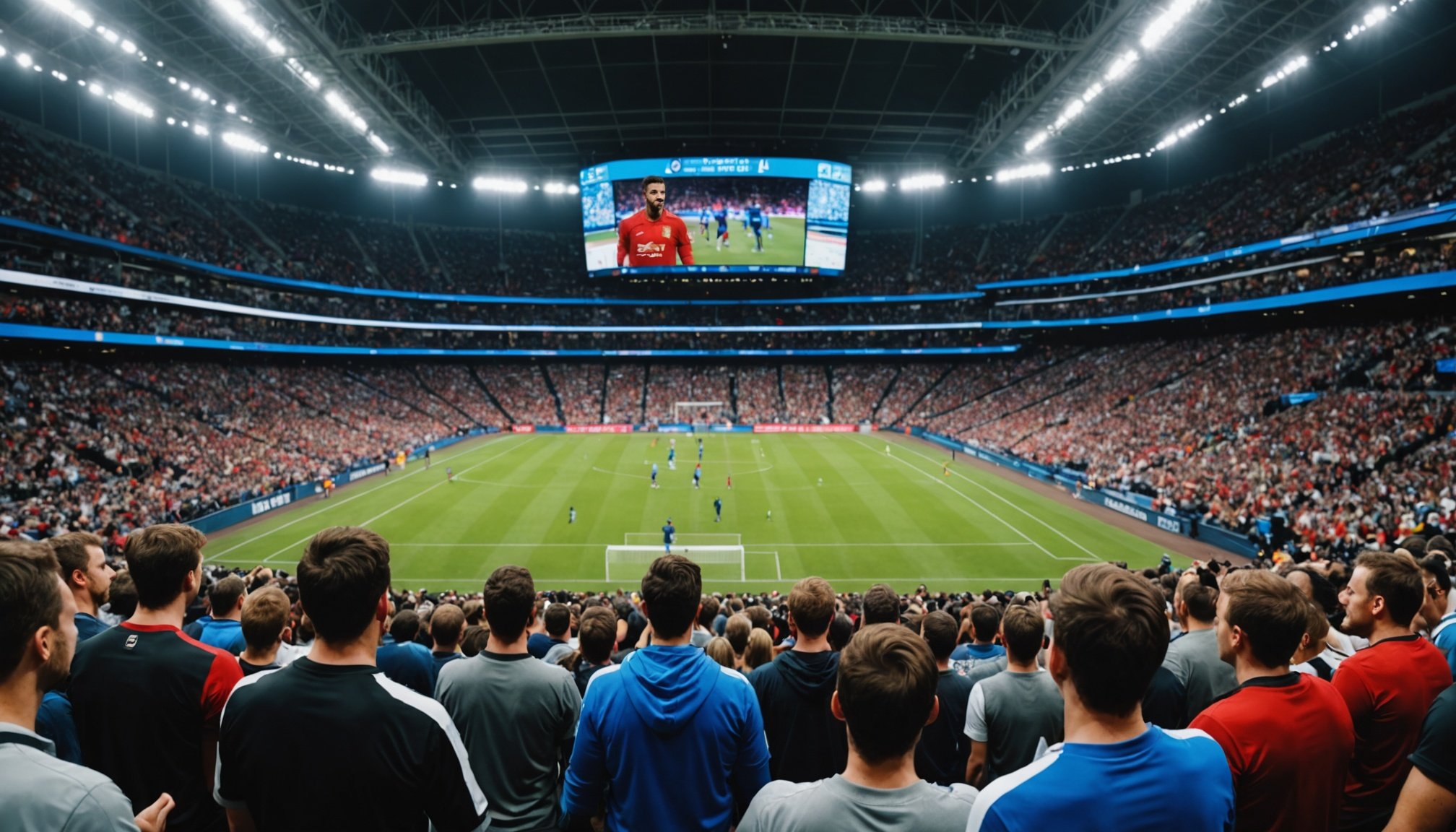The Role of AI in Sports Video Games
AI in sports games has significantly transformed how players experience sports titles. By leveraging advanced algorithms, developers enhance gameplay realism and immersion. One crucial area where AI has excelled is in crowd simulation. Creating lifelike spectators who react dynamically to game events adds depth to the overall gaming atmosphere, closely mimicking real-world sports experiences.
In recent years, sports gaming technology has seen numerous innovations. For instance, AI-driven features such as adaptive difficulty levels adjust in real-time to a player’s skill level, ensuring a balanced and challenging experience. AI also powers advanced player animations and decision-making processes, creating unpredictable and engaging gameplay dynamics, reflecting the complexities of actual sports.
Also to discover : Essential Factors for Crafting Authentic NPC Behaviors in Sandbox Games
Video game innovation in AI extends to developing realistic weather conditions and dynamic time of day, adding to a game’s authenticity. Groundbreaking applications are evident in titles where AI coaches assess player performance, offering tactical advice, and enhancing strategic elements. This integration of AI not only improves gameplay but also elevates user engagement, encouraging players to perfect their strategies for better outcomes. With these advancements, AI in sports video games continues to push the boundaries of what virtual sports environments can achieve, delivering unparalleled experiences for gamers worldwide.
AI Techniques for Crowd Reactions
Creating realistic and dynamic crowd reactions enhances the gaming experience, bringing virtual environments to life. AI crowd simulation techniques are pivotal in this process. They incorporate procedural generation, enabling diverse and lifelike crowd movements. This technique ensures that each game scene feels unique, mimicking the unpredictable nature of real-life crowds.
In the same genre : Empowering developers: innovative blockchain solutions to prevent cheating in online multiplayer games
Procedural Animation Approaches
Procedural generation in crowd movement focuses on animating without manual intervention, allowing for spontaneous and seamless crowd animations. This technique provides several benefits. It reduces the workload on animators by dynamically generating movements, creating more lifelike interactions. Popular sports games illustrate this well. For example, in FIFA, procedural animation allows each match to feel unique due to the varied and realistic reactions of the crowd, enhancing player immersion.
Machine Learning Applications
Machine learning in gaming optimizes crowd animations by predicting behavior patterns. These data-driven techniques ensure responsive crowd reactions by learning from countless gameplay scenarios. Case studies, such as those involving basketball games, demonstrate the effective implementation of machine learning. The system adapts to player movements, crafting a more engaging and realistic atmosphere.
Dynamic Crowd Responses to Gameplay
Integrating real-time crowd feedback into games provides context-aware experiences. By employing strategies that react dynamically to in-game events, developers can enhance emotional crowd responses. During pivotal moments, like scoring a critical goal, such feedback mechanisms amplify excitement, offering players an authentic and heightened emotional experience.
Case Studies of Games Utilizing AI for Crowd Reactions
In the realm of sports video games, integrating AI technologies for crowd dynamics has led to noticeable improvements in realistic crowd implementation. One of the prime success stories is FIFA’s AI-generated crowd responses. Before AI enhancements, players often found the audience reactions repetitive and uninspiring. Fast forward to now, AI has enabled dynamic, context-sensitive crowd behaviour that responds to on-field actions, elevating the gaming experience.
NBA 2K, another leading title, has utilized AI to create diverse and emotive crowd animations. The impact is palpable; user feedback highlights a more immersive atmosphere where the crowd’s reactions feel authentic and impactful. This enhancement bridges players to the virtual world, allowing them to experience heightened engagement through the game’s intensified ambiance.
Similarly, the Madden NFL series has adopted AI for crafting its stadium audiences. Players report a substantial increase in enjoyment and immersion, as the crowd now reacts in varied ways to in-game events, simulating real-life game-day emotions more closely.
By comparing player experiences before and after AI incorporation, it is evident that AI’s role in sports video game case studies not only enhances realism but also significantly improves player satisfaction. Enthusiasts now find themselves deeper immersed, with feedback consistently reflecting high appreciation for these innovations.
Impact of Realistic Crowd Reactions on Player Engagement
In the realm of modern gaming, realistic crowd reactions significantly enhance player immersion. The way a virtual audience responds can profoundly affect a player’s motivation and performance. When gamers experience authentic crowd effects on gameplay, they often report heightened excitement and a deeper connection with the game narrative. This connection stems from the psychological effects of immersive crowds which simulate real-world experiences, making the gaming environment more believable.
Research has shown that when the crowd dynamically reacts to in-game actions, players feel a greater sense of accomplishment. This is reminiscent of real-life scenarios where audience reactions can either boost or hinder a performer’s confidence. In gaming, positive feedback, such as cheers for successful actions, can elevate a player’s focus and drive to continue.
With the advancement of AI technologies, predictions suggest even more interactive experiences for gamers. As AI becomes increasingly sophisticated, the personalization of crowd behaviors could be more nuanced, adapting to a user’s play style and preferences. This will likely reshape the gamer experience, offering more tailored, engaging interactions that keep players engrossed for longer periods. In this evolving landscape, realistic crowd reactions will continue to play a pivotal role in captivating and maintaining player immersion.
Future Directions of AI in Sports Video Games
As technology advances, the future of AI in gaming promises transformative changes, especially in sports video games. Emerging trends in AI research are setting the stage for more immersive and interactive gaming experiences. For instance, the development of crowd intelligence allows for more realistic simulations of audience reactions and interactions. Improved AI logic can mimic real player movements and decision-making processes with increasing accuracy.
Technology advancements in machine learning and data processing contribute significantly to these improvements, offering smoother gameplay and more dynamic game environments. These advancements are expected to blur the lines between virtual and reality, providing gamers with experiences that feel real.
Looking ahead, experts predict several exciting emerging trends that could take sports video games to the next level. Future AI innovations might include real-time adaptability, where the game adjusts to each player’s unique style, and predictive analytics, which could provide players with instant feedback on performance and strategies.
Upcoming sports titles are speculated to integrate these advances, making games more engaging and challenging. As the game industry continues to evolve, staying informed about the future of AI in gaming is crucial for enthusiasts anticipating the next wave of groundbreaking titles.











